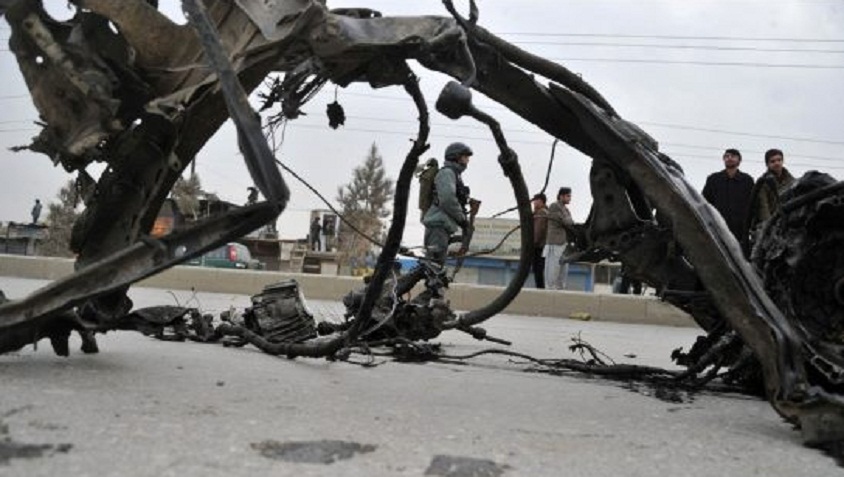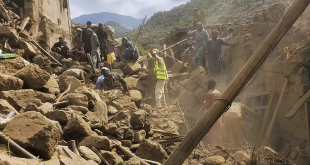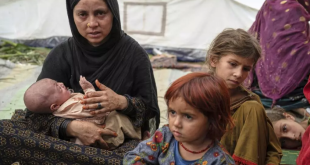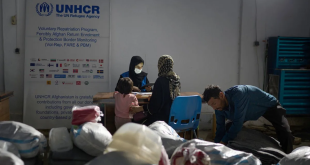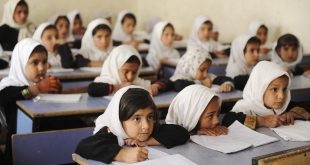AT News Report
KABUL: The UN Assistance Mission in Afghanistan (UNAMA) on Wednesday released its quarterly report on the protection of civilian casualties in armed conflict that indicated a 23 percent decrease in civilian casualties across the country.
According to report in the first quarter of 2019, the UNAMA continued to document high levels of harm to civilians from the armed conflict. From 1 January to 31 March 2019, UNAMA documented 1,773 civilian casualties (581 deaths and 1,192 injured), including 582 child casualties (150 deaths and 432 injured). This represents a 23 percent decrease in overall civilian casualties as compared to the same period last year and is the lowest for a first quarter since 2013.
The overall reduction of civilian casualties was driven by a decrease in civilian casualties by suicide improvised explosive device (IED) attacks. UNAMA notes the particularly harsh winter conditions during the first three months of the year, which may have contributed to this trend. It is unclear whether the decrease in civilian casualties was influenced by any measures taken by parties to the conflict to better protect civilians, or by the ongoing talks between parties to the conflict.
UNAMA is very concerned by the continued targeting of civilians and increase in civilian casualties from the use of non-suicide IEDs by Anti-Government Elements, as well as significant increases in civilian casualties from aerial and search operations, which drove an overall increase in civilian casualties by Pro-Government Forces. Civilian deaths attributed to Pro-Government Forces surpassed those attributed to Anti-Government Elements during the first quarter of 2019. Ground engagements were the leading cause of civilian casualties, causing approximately one third of the total. A single mortar attack incident by Daesh/Islamic State Khorasan Province (ISKP) on 7 March 2019 in Kabul caused approximately one-fifth of all civilian casualties from ground engagements. The use of IEDs was the second leading cause of civilian casualties. Contrary to 2017 and 2018 trends, the majority of IED civilian casualties were caused by non-suicide IEDs rather than suicide IEDs. Aerial operations were the leading cause of civilian deaths and the third leading cause of civilian casualties, followed by targeted killings and explosive remnants of war. Civilians living in Kabul, Helmand, Nangarhar, Faryab and Kunduz provinces were most affected (in that order).
The overall decrease in civilian casualties was largely driven by a significant – 76 per cent – reduction in civilian casualties from suicide IED attacks. During the first quarter of 2019, UNAMA documented four suicide IED attacks resulting in 178 civilian casualties, as compared to 19 incidents resulting in 751 civilian casualties during the same period in 2018. All four attacks were attributed to Taliban. Civilian casualties from ground engagements also reduced by 13 percent. However, UNAMA is very concerned by Anti-Government Elements’ continued targeting of civilians and the increase in civilian casualties from non-suicide IEDs (21 per cent increase), as well as the continuing, significant increase in civilian casualties from aerial operations (41 per cent increase) and search operations (85 per cent increase) by Pro-Government Forces. Incidents Affecting Education and Healthcare Between 1 January and 31 March 2019, UNAMA recorded 18 incidents that impacted education, 4 12 of which were attributed to Anti-Government Elements, four to Pro-Government Forces, and two jointly to Anti-Government Elements and Pro-Government Forces. Four of these incidents involved attacks by Taliban targeting girls’ schools in Farah province, mostly in areas under their control, including setting the school buildings and equipment on fire. While no casualties were recorded, the attacks spread fear among the students and their families and led to school closures, affecting education for almost 3000 girls. UNAMA also recorded 26 incidents impacting healthcare,5 17 of which were attributed to the Taliban, seven to Pro-Government Forces, one to undetermined Anti-Government Elements and one jointly to Pro-Government Forces and Taliban. Six of the incidents attributed to the Taliban occurred in the Eastern region, 6 where 88 medical facilities were closed and three medical personnel were abducted. The abductees were released either the same or following day, and most clinics reopened days or weeks later, often as a result of mediation by elders.
Anti-Government Elements During the first three months of 2019, Anti-Government Elements remained responsible for the majority of civilian casualties, causing 963 civilian casualties (227 deaths and 736 injured), representing a 36 per cent decrease as compared to the same time period in 2018. UNAMA attributed 39 per cent of civilian casualties to Taliban, 12 per cent to Daesh/ISKP, and three per cent to unidentified Anti-Government Elements. UNAMA remains seriously concerned about Anti-Government Element attacks that deliberately target civilians, including the civilian government administration. In the first quarter of 2019, UNAMA documented 529 civilian casualties resulting from deliberate targeting of civilians. For instance, on 7 March in Kabul, Daesh/ISKP fired 12 mortar rounds into a crowd of people marking the anniversary of the death of a prominent ethnic Hazara leader. As a result, 11 civilians were killed and 104 were injured. Daesh/ISKP has claimed responsibility for the incident. 7 In another incident on 23 March in Lashkar Gah, Helmand province, Taliban carried out an IED attack against civilian government officials during Nowruz celebrations, killing two civilians and injuring another 45. 8 Taliban claimed responsibility for the incident. 9 While civilian casualties from suicide IED attacks significantly decreased during the first quarter of 2019 as compared to the first quarter of 2018, UNAMA documented a 21 per cent increase in civilian casualties from non-suicide IED attacks, resulting in 322 civilian casualties (53 deaths and 269 injured). 10 UNAMA reiterates its concern about the indiscriminate use of suicide and other IEDs in civilian areas, as well as the deliberate targeting of civilians with these devices. On 14 January 2019, in Kabul city, a suicide vehicle-borne IED detonated near Green Village compound, in which several international companies were based. Six civilians were killed and 140 injured, including 51 children and 18 women, which was the highest number of civilian casualties caused in any single incident in the first quarter of 2019. Many residential homes and businesses in the area suffered damage. Taliban claimed responsibility for the attack. 11
UNAMA reminds Anti-Government Elements that the deliberate targeting of civilians – including government officials – is prohibited under international law and constitutes a war crime. The mission urges Anti-Government Elements to apply a definition of civilian that accords with international law and to take immediate measures to prevent civilian casualties. Pro-Government Forces Between 1 January and 31 March 2019, UNAMA attributed 608 civilian casualties (305 deaths and 303 injured) to Pro-Government Forces, representing a 39 per cent increase from the same period last year.12 UNAMA notes with concern that Pro-Government Forces were responsible for more civilian deaths than Anti-Government Elements during the first quarter of 2019. UNAMA attributed 17 per cent of civilian casualties to the Afghan national security forces, 13 per cent to international military forces, two per cent to pro-Government armed groups, and two per cent to multiple Pro-Government Forces. Continuing trends observed in 2018, UNAMA documented increased harm to civilians from aerial and search operations, with the highest number of civilian casualties recorded from each of these tactic types in the first quarter of any year since UNAMA began systematic documentation. ProGovernment Forces carried out 43 aerial operations in the first quarter of 2019 that resulted in 228 civilian casualties (145 deaths, 83 injured), with international military forces responsible for 39 of these operations resulting in 219 civilian casualties (140 deaths, 79 injured). Women and children comprised half of the civilian casualties from all aerial operations. In one incident on 23 March in Kunduz city, international military forces conducted an airstrike in support of Afghan forces on the ground, killing 13 civilians including 10 children and two women and injuring three more civilians, including one child and one woman.13 Pro-Government Forces caused 102 civilian casualties (72 deaths and 30 injured) across 32 search operations, which is an 85 per cent increase in civilian casualties as compared to the first quarter of 2018.14 The majority – 80 per cent – of the search operations resulting in civilian casualties were attributed to either the National Directorate of Security Special Forces or the Khost Protection Force, both of which are supported by international military forces. UNAMA reiterates its concern that these forces appear to act with impunity, outside of the governmental chain of command. UNAMA continues to call for more transparency and accountability for these operations, and for the Government of Afghanistan to either disband the Khost Protection Force or formally incorporate members into its armed forces, following a robust vetting procedure.
UNAMA welcomes President Ghani’s instruction to national security and defence officials on 13 March, following a series of incidents by Pro-Government Forces that caused civilian casualties, to review the mechanisms and procedures used in military operations with a view to preventing civilian casualties.15 UNAMA looks forward to seeing progress on this issue. UNAMA urges both the Afghan national security forces and international military forces to conduct investigations into allegations of civilian casualties, to publish the results of their findings, and to provide compensation to victims as appropriate.
 Afghanistan Times
Afghanistan Times
